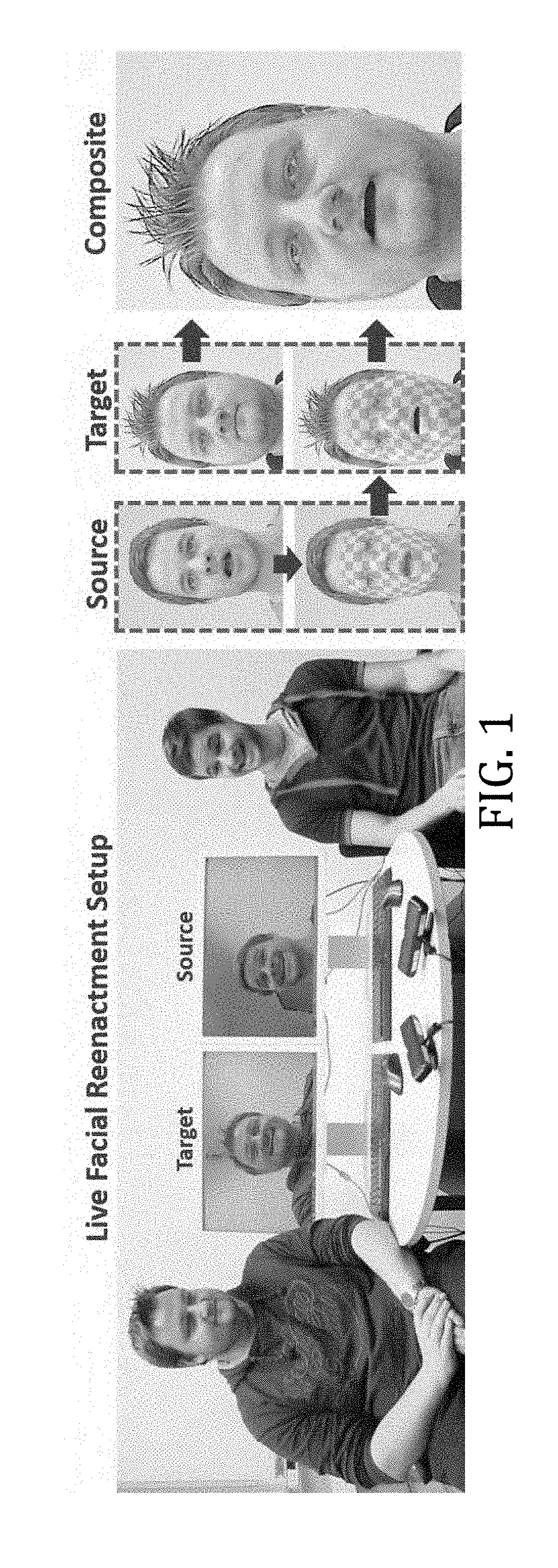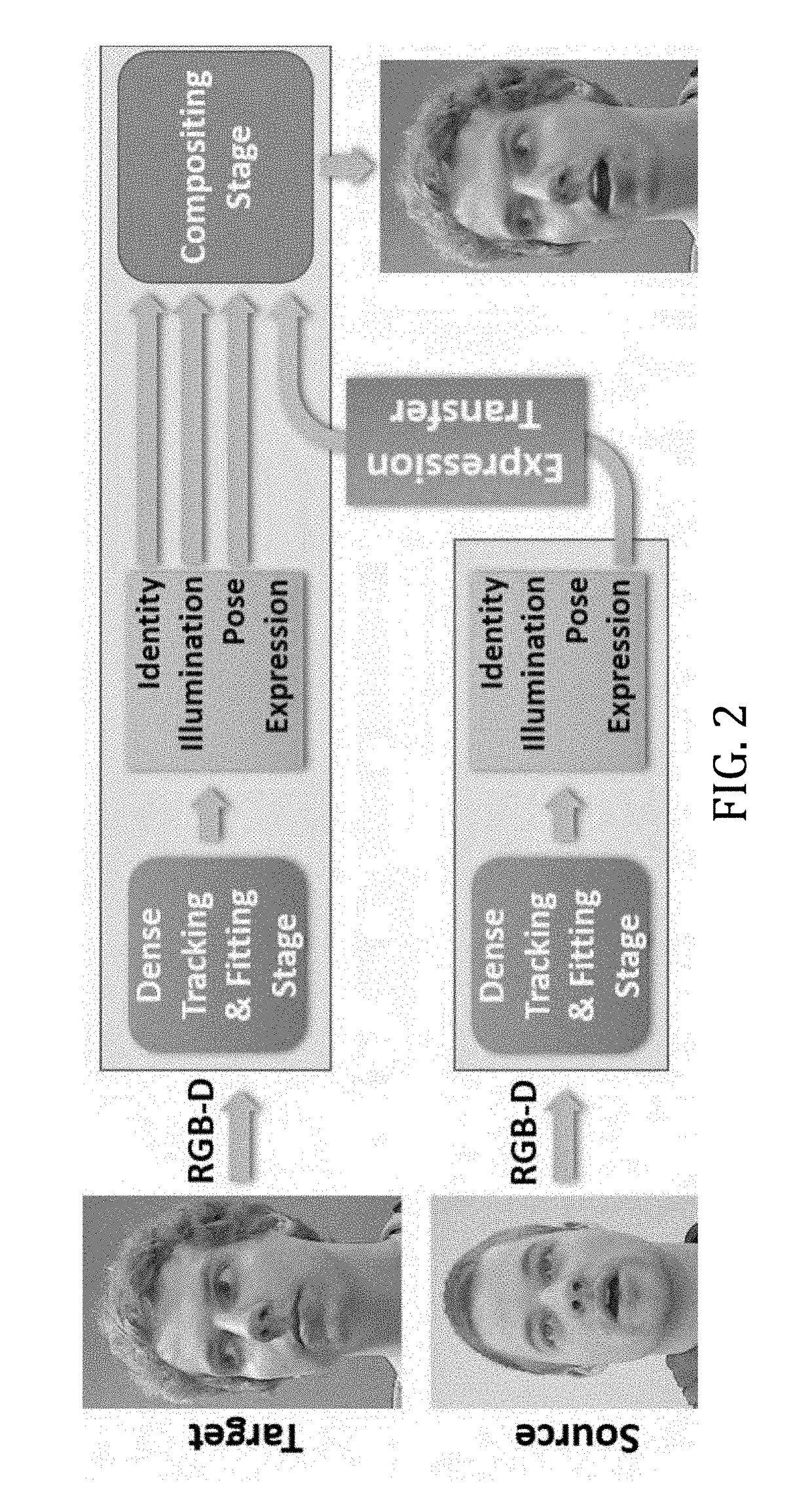Real-time Expression Transfer for Facial Reenactment
a technology of facial reenactment and real-time expression, applied in the direction of image enhancement, instruments, editing/combining figures or texts, etc., can solve the problems of challenging to detect that the video input is spoofed, and the task of reenactment is a far more challenging task
- Summary
- Abstract
- Description
- Claims
- Application Information
AI Technical Summary
Benefits of technology
Problems solved by technology
Method used
Image
Examples
first embodiment
[0025]To synthesize and render new human facial imagery according to the invention, a parametric 3D face model is used as an intermediary representation of facial identity, expression, and reflectance. This model also acts as a prior for facial performance capture, rendering it more robust with respect to noisy and incomplete data. In addition, the environment lighting is modeled to estimate the illumination conditions in the video. Both of these models together allow for a photo-realistic re-rendering of a person's face with different expressions under general unknown illumination.
[0026]As a face prior, a linear parametric face model Mgeo(α,δ) is used which embeds the vertices viε3, iε{1, . . . , n} of a generic face template mesh in a lower-dimensional subspace. The template is a manifold mesh defined by the set of vertex positions V=[vi] and corresponding vertex normals N=[ni], with |V|=|N|=n. The Mgeo(α,δ) parameterizes the face geometry by means of a set of dimensions encoding ...
second embodiment
[0071]FIG. 14 shows an overview of a method according to the invention. A new dense markerless facial performance capture method based on monocular RGB data is employed. The target sequence can be any monocular video; e.g., legacy video footage downloaded from YouTube with a facial performance. More particularly, one may first reconstruct the shape identity of the target actor using a global non-rigid model-based bundling approach based on a prerecorded training sequence. As this preprocess is performed globally on a set of training frames, one may resolve geometric ambiguities common to monocular reconstruction. At runtime, one tracks both the expressions of the source and target actor's video by a dense analysis-by-synthesis approach based on a statistical facial prior. In order to transfer expressions from the source to the target actor in real-time, transfer functions efficiently apply deformation transfer directly in the used low-dimensional expression space. For final image sy...
PUM
 Login to View More
Login to View More Abstract
Description
Claims
Application Information
 Login to View More
Login to View More - R&D
- Intellectual Property
- Life Sciences
- Materials
- Tech Scout
- Unparalleled Data Quality
- Higher Quality Content
- 60% Fewer Hallucinations
Browse by: Latest US Patents, China's latest patents, Technical Efficacy Thesaurus, Application Domain, Technology Topic, Popular Technical Reports.
© 2025 PatSnap. All rights reserved.Legal|Privacy policy|Modern Slavery Act Transparency Statement|Sitemap|About US| Contact US: help@patsnap.com



